We may receive a commission when you use our affiliate links. However, this does not impact our recommendations.
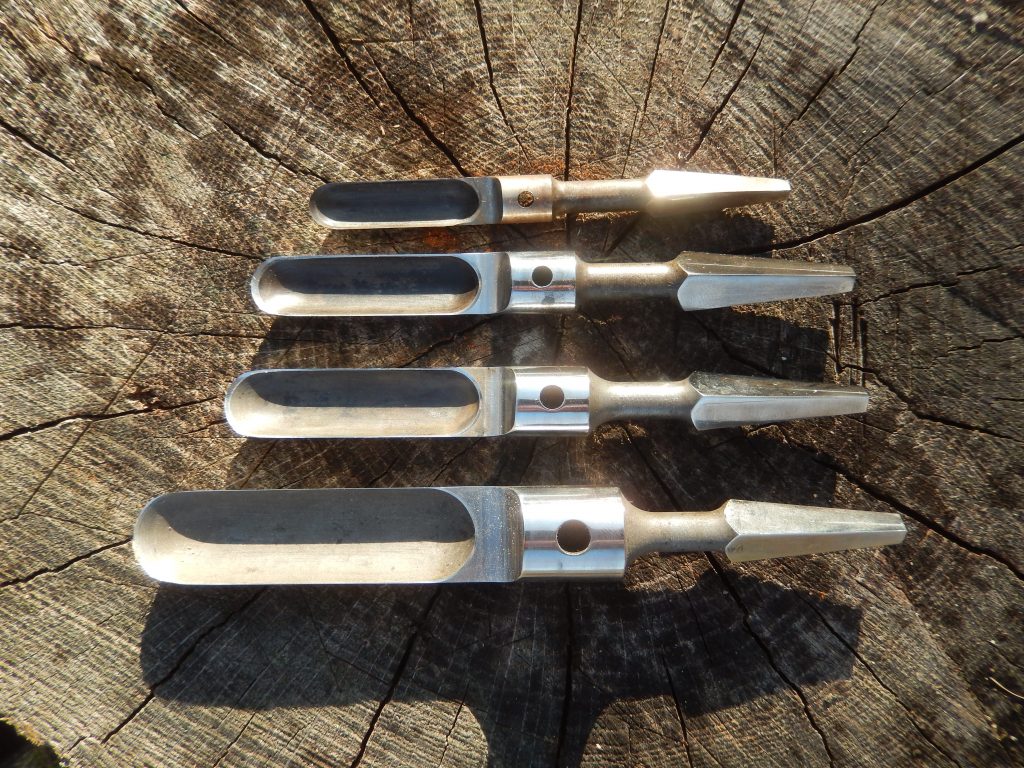
To be transparent, I haven’t built a Windsor chair in my life (although I’ve had the pleasure of restoring a few and fabricating parts for them over the years). And yet, based on my informed experienced with the new spoon bits from Gramercy Tools, I believe that these new bits will be a hit among devotees of hand-tool chairmaking in particular, and green woodworking in general.
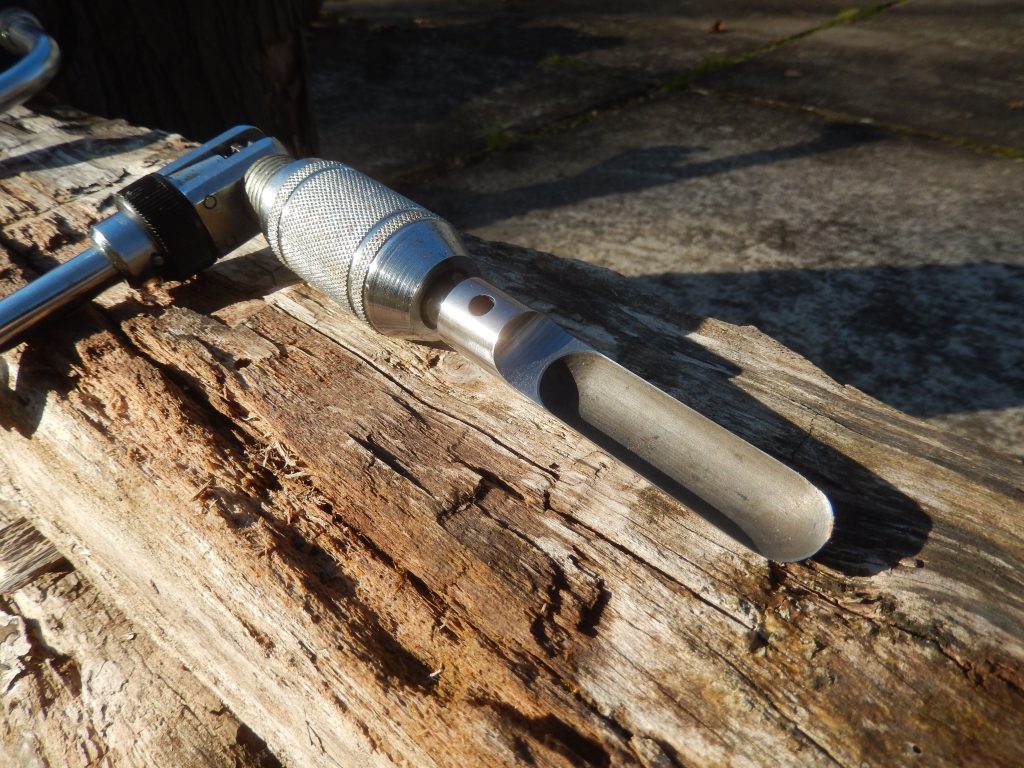
Back in December, at the end of the book party which Joel Moskowitz, owner of Tools for Working Wood, hosted for me, I snuck behind the scenes of his Brooklyn storefront to see the manufacturing apparatus which enables him and his crew to make tools right here in New York City. Anyone who has ever met or spoken with Joel knows about his love affair with tools, wood, and old books. He holds strong opinions on these matters and bold views on what woodworking is, and ought to be. Fortunately for us, he disseminates these convictions via the books that he authors, his articles, his blog, and his business. The fact that he is making tools in NYC – one of the least sustainable locations these days for manufacturing, and for operating a small business, is truly remarkable.
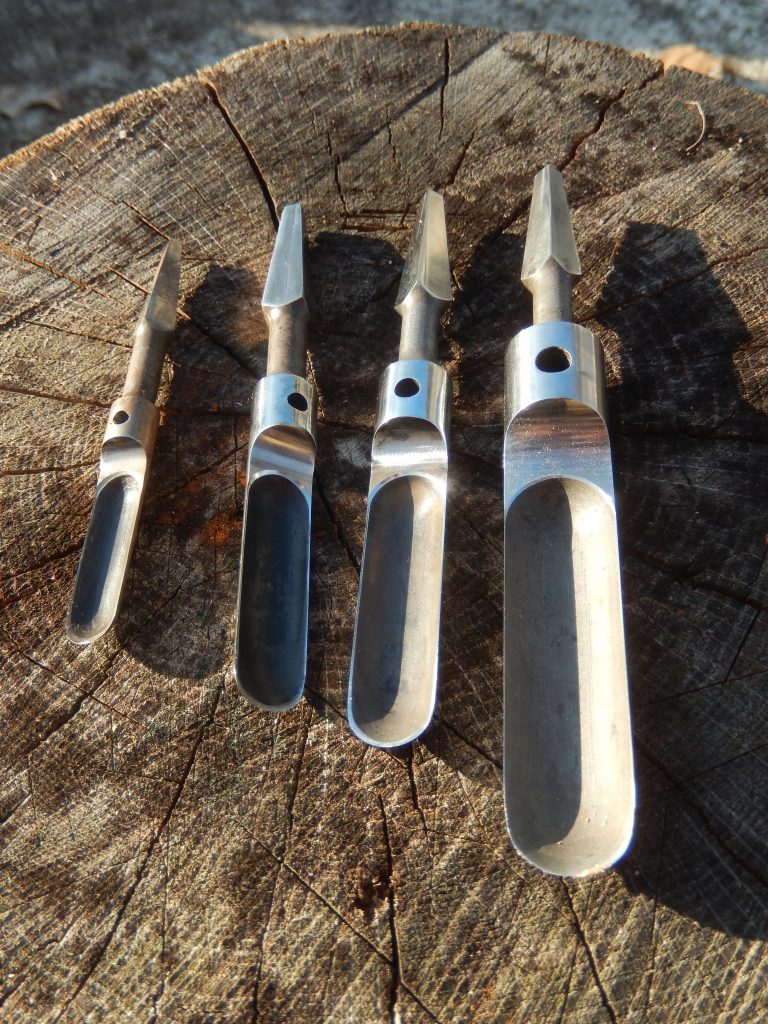
At the back part of his industrial building, Joel has all the equipment that he needs in order to make the high-end Gramercy Tool line: a plethora of machining equipment, a CNC mill, a few surface grinders, and recently a battery of heat treating gear. In the last few years, together with his senior designer Tim Corbett, he developed a way to make these centuries-old bits, but with a modern twist.
Spoon bits, as their name suggests, look like an elongated spoon and are meant to bore wood (mainly greenwood) with the help of a Bit Brace (aka, Brace, Hand Brace, Brace Drill, Ratchet Brace). Their history goes back many centuries and their simple shape has preceded both auger bits and the more modern twist bits. The newly launched bits from Gramercy are relatively lightweight, well balanced, and cut extremely well. I tried the bits on dry Ash, on partially dried cherry (14% moisture content) and on soft wood. From these trials, (you can watch the videos below) I can attest to their very high quality. The bits are machined perfectly, then hardened, and finely sharpened and honed.
Their geometry requires the user to commence the drilling carefully, as they don’t have a centering spur or a screw to help with plunging them into the wood. Yet, with some practice I was able to produce some very nice results. By following the beautifully illustrated and highly detailed instruction sheet, even the inexperienced Bit Brace user will be able to produce a clean and dependable outcome. There are a few diameters of bits in the Gramercy arsenal. I tried most of them. In my experience drilling was surprisingly easy, albeit drilling with the ¾” spoon bit (the widest that I have) in hard, dry Ash was not a cake walk. But then again, the spoon bits are predominantly intended for green or semi-green hard and soft woods.
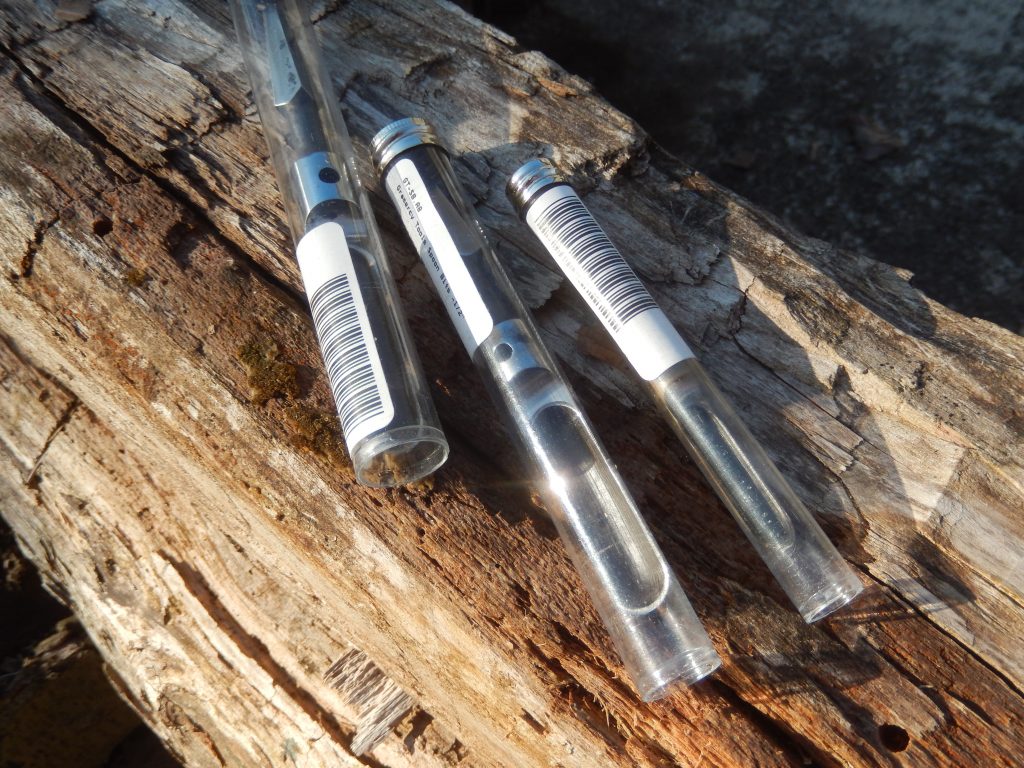
The bits are packed in plastic sleeves.
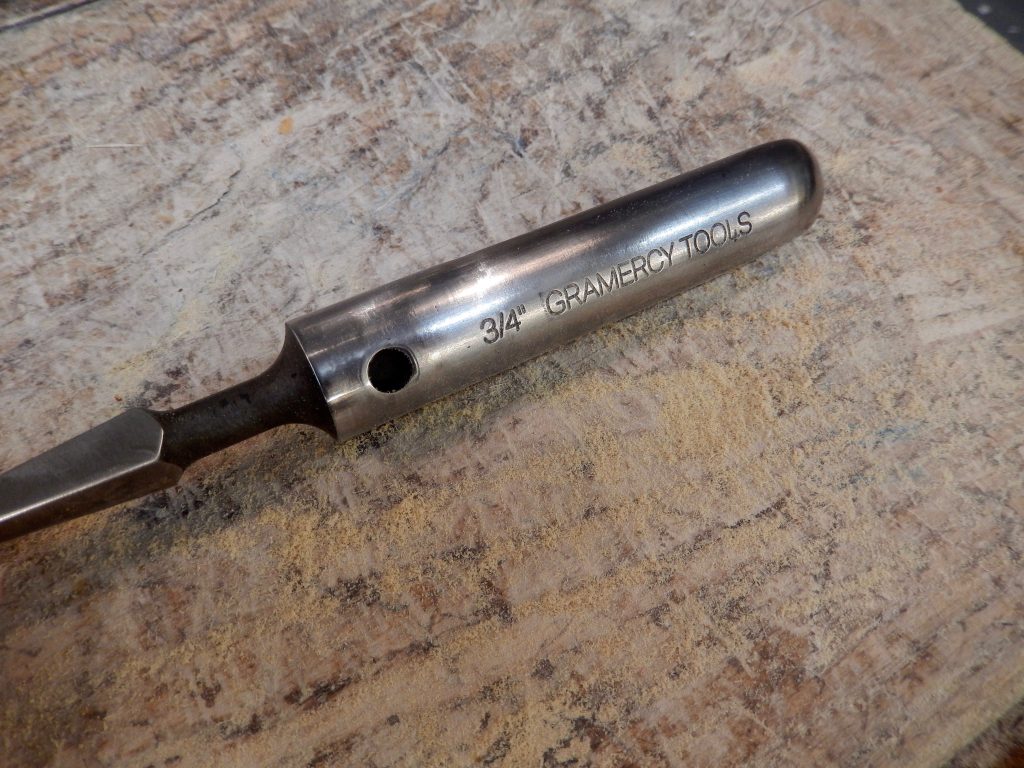
Each spoon bit is clearly engraved for identification
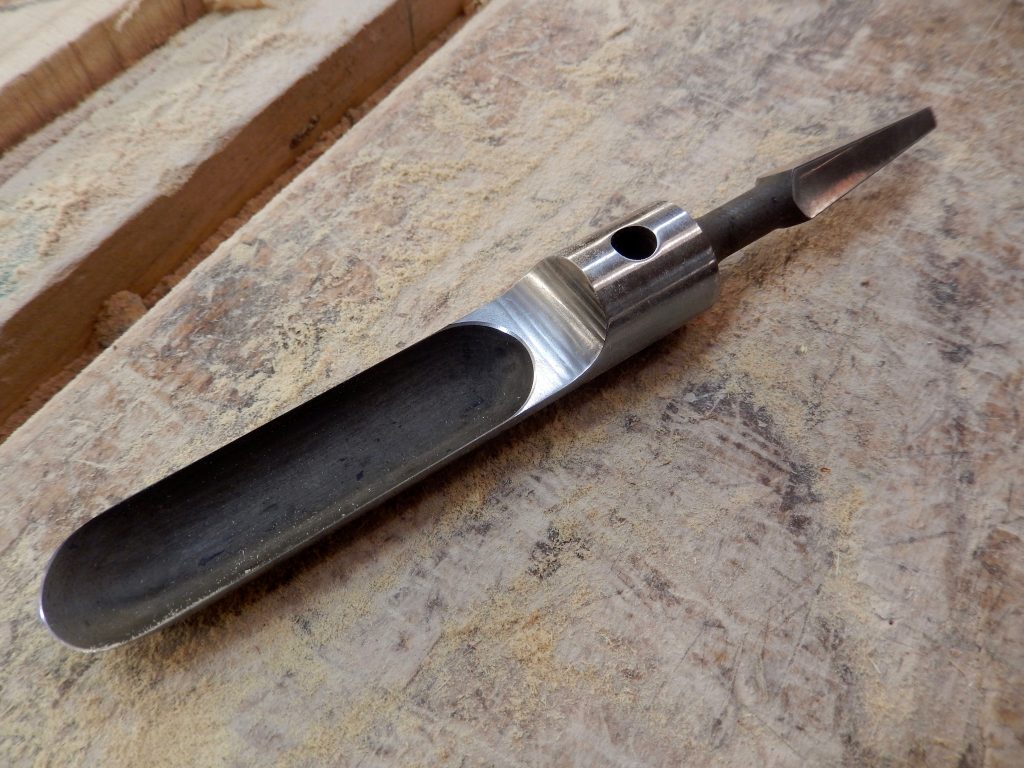
Out of the package, the bits come razor sharp and ready for work.
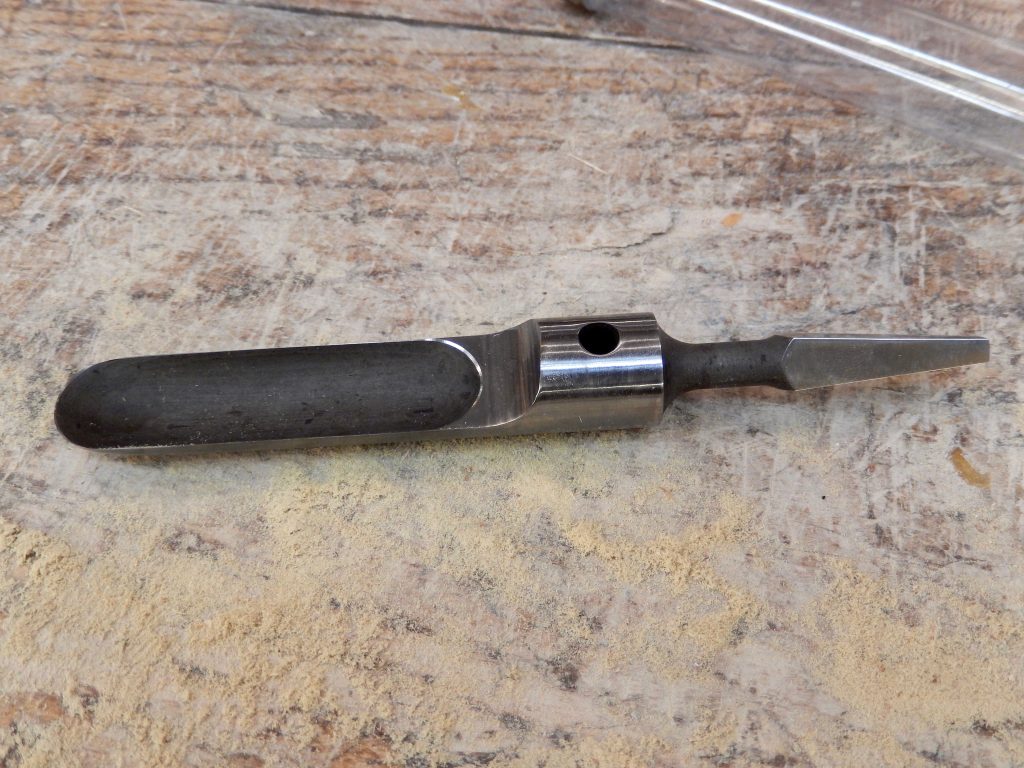
Bellow are a few videos where you can watch me drilling in a beam of cherry wood using bits of different diameters.
Video #1: Drilling a single hole in cherry using the 1/2″ bit.
Video #2: Drilling a single hole in cherry using the 3/4″ bit.
Video #3: Drilling three holes in a row (in preparation for excavating a mortise) in cherry using the 3/4″ bit.
Video #4: Drilling three holes using a 9/16″ bit.
Video #5: How to begin a hole using a spoon bit. I turn to the right and the left until I get sufficient purchase on the wood.
Video #6: How to begin a hole using a spoon bit.
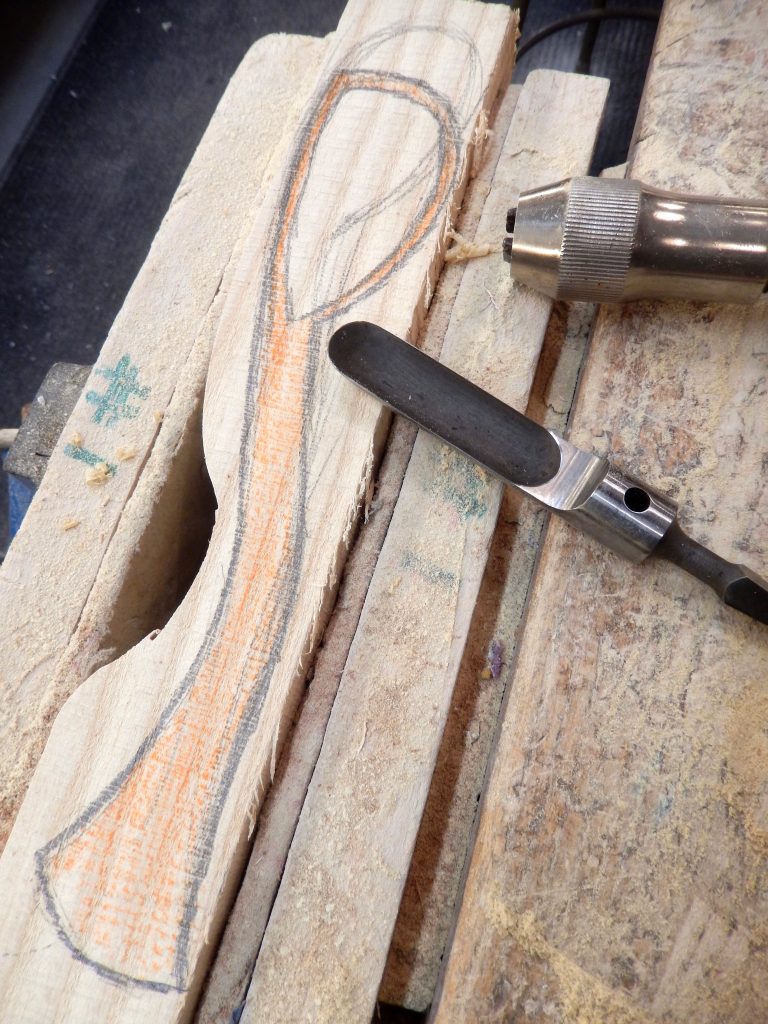
Getting ready for drilling in hard, dry ash using a 3/4″ bit.
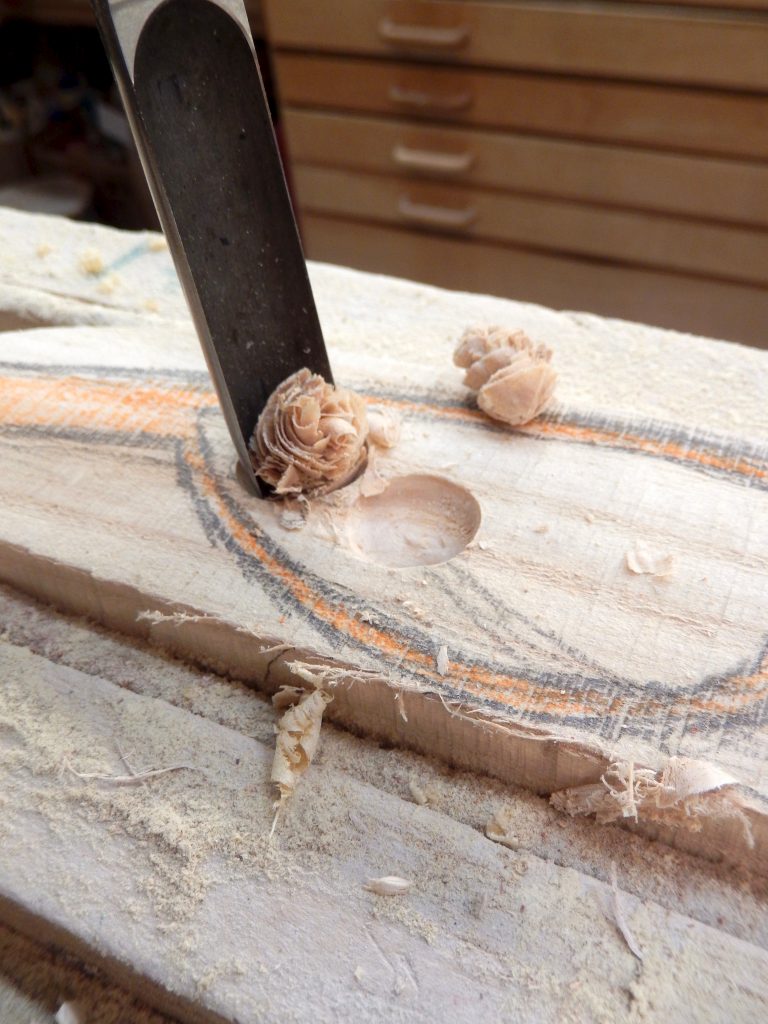
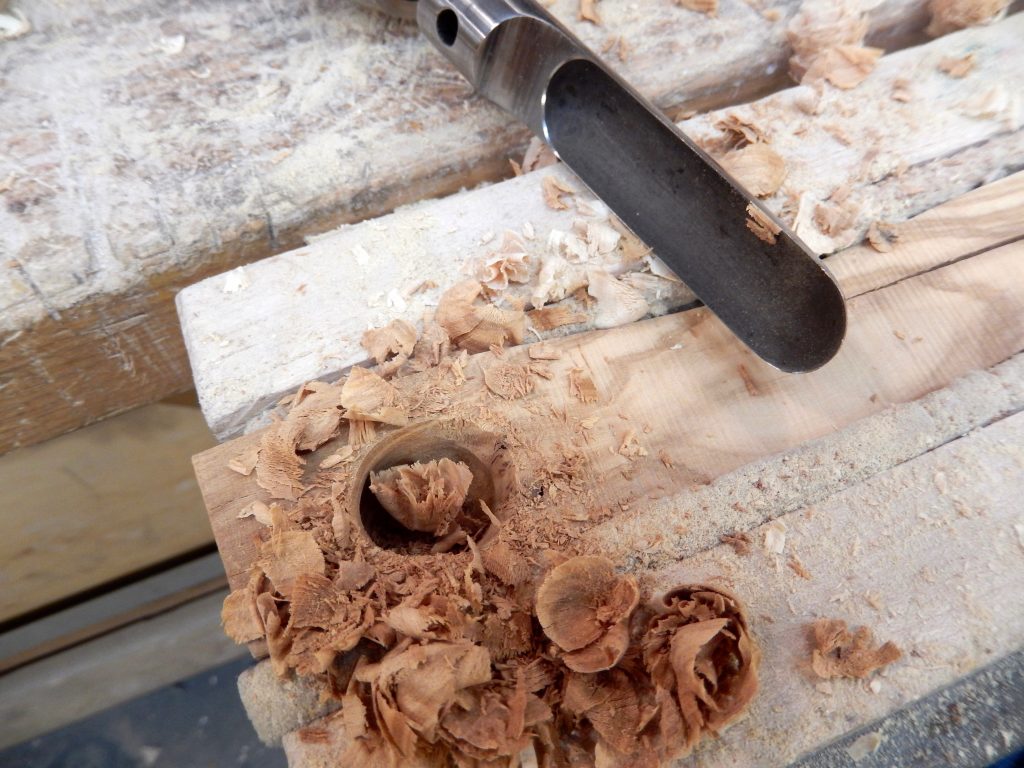
Drilling in dry olive wood.
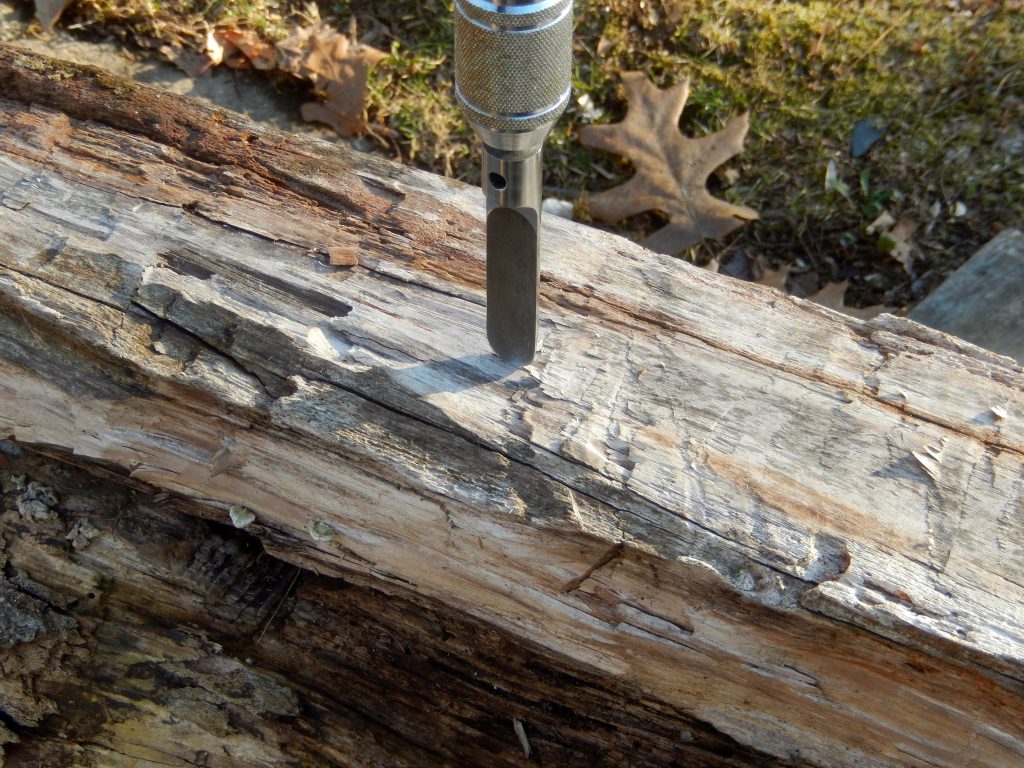
Next time I will demonstrate a very simple technique for sharpening and honing spoon bits that become dull.
Here are some supplies and tools we find essential in our everyday work around the shop. We may receive a commission from sales referred by our links; however, we have carefully selected these products for their usefulness and quality.








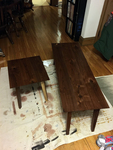

Dear mr Lieberman, I have a small correction to propose, with the maximum respect, well understood.
You say, in your description of the spoon bits, that these are meant to be used with something you call a “brace DRILL”.
Actually such object does not exist – and it never has – for the correct term for it is BITBRACE.
Please make a note of this, for the sake of accuracy and correctness.
Thank you very much, Carlo Antonio Martinelli.
Dear Carlo,
Thank you so much for proposing this correction. As always, I am very grateful for readers who take the time and point out typos or mistakes. The reason I used Brace Drill is that it is one of the common names online. Garrett Wade sell it under this name and so is a few other stores. Thanks to you I now recognize that Bit Brace is the more appropriate term. I will change the name but will also add in parenthesis the other common names to help people who wish to buy the tool to locate it.
Thnaks,
Yoav